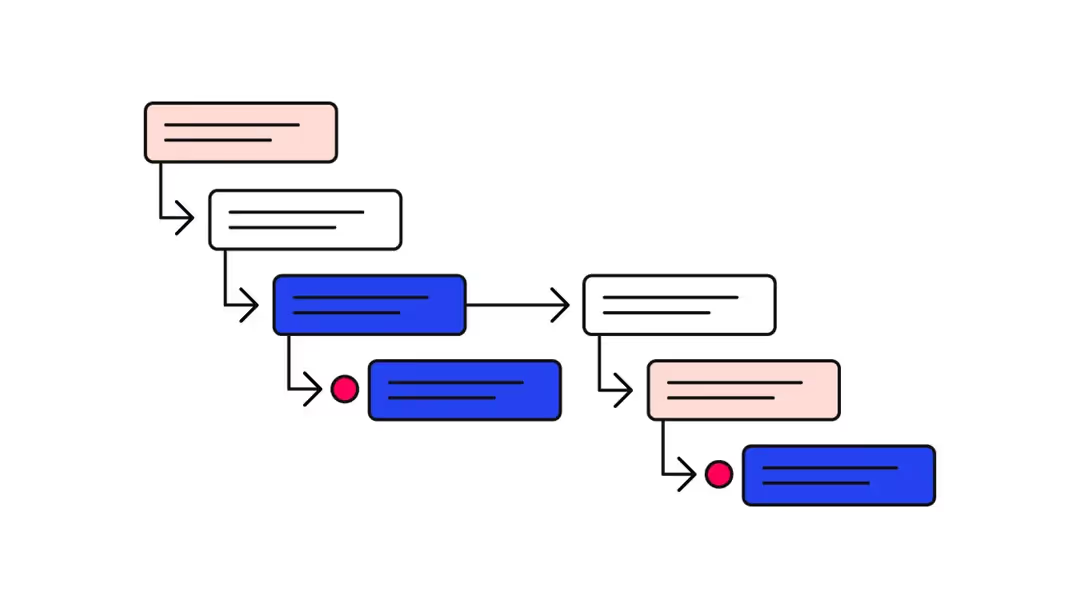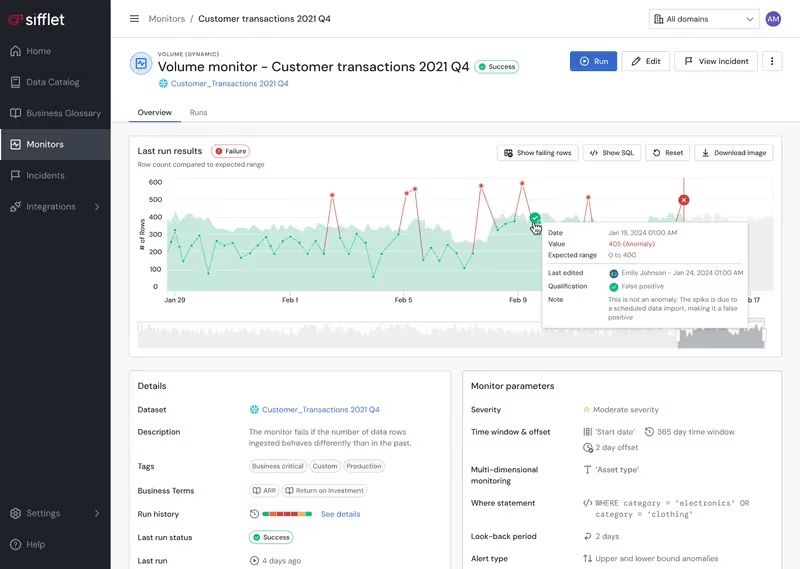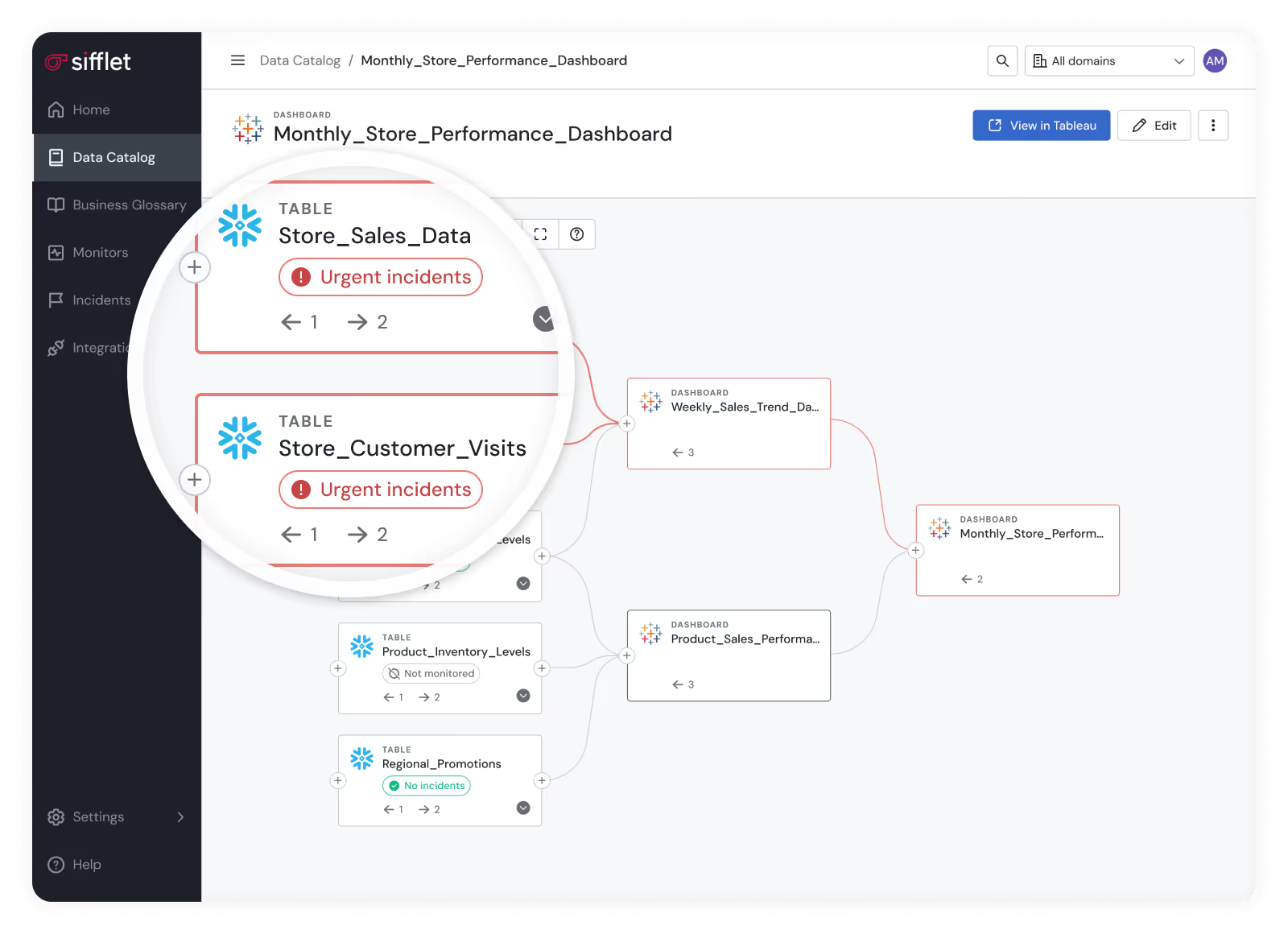A Seriously Smart Upgrade.
Prevent, detect and resolve incidents faster than ever before. No matter what your data stack throws at you, your data quality will reach new levels of performance.















No More Over Reacting
Sifflet takes you from reactive to proactive, with real-time detection and alerts that help you to catch data disruptions, before they happen. Watch your mean time to detection fall rapidly. On even the most complex data stacks.
- Advanced capabilities such as multidimensional monitoring help you seize complex data quality issues, even before breaks
- ML-based monitors shield your most business-critical data, so essential KPIs are protected and you get notified before there is business impact
- OOTB and customizable monitors give you comprehensive, end-to-end coverage and AI helps them get smarter as they go, reducing your reactivity even more.

Resolutions in Record Time
Get to the root cause of incidents and resolve them in record time.
- Quickly understand the scope and impact of an incident thanks to detailed system visibility
- Trace data flow through your system, identify the start point of issues, and pinpoint downstream dependencies to enable a seamless experience for business users, all thanks to data lineage
- Halt the propagation of data quality anomalies with Sifflet’s Flow Stopper















Still have a question in mind ?
Contact Us
Frequently asked questions
How can I ensure SLA compliance during data integration?
To meet SLA compliance, it's crucial to monitor ingestion latency, data freshness checks, and throughput metrics. Implementing data observability dashboards can help you track these in real time and act quickly when something goes off track. Sifflet’s observability platform helps teams stay ahead of issues and meet their data SLAs confidently.
Why is data observability so important for modern data teams?
Great question! Data observability is essential because it gives teams full visibility into the health of their data pipelines. Without it, small issues can quickly snowball into major incidents, like broken dashboards or faulty machine learning models. At Sifflet, we help you catch problems early with real-time metrics and proactive monitoring, so your team can focus on creating insights, not putting out fires.
How does Sifflet support reverse ETL and operational analytics?
Sifflet enhances reverse ETL workflows by providing data observability dashboards and real-time monitoring. Our platform ensures your data stays fresh, accurate, and actionable by enabling root cause analysis, data lineage tracking, and proactive anomaly detection across your entire pipeline.
How does the new Custom Metadata feature improve data governance?
With Custom Metadata, you can tag any asset, monitor, or domain in Sifflet using flexible key-value pairs. This makes it easier to organize and route data based on your internal logic, whether it's ownership, SLA compliance, or business unit. It's a big step forward for data governance and helps teams surface high-priority monitors more effectively.
What makes Sifflet different from other data observability platforms like Monte Carlo or Anomalo?
Sifflet stands out by offering a unified observability platform that combines data cataloging, monitoring, and data lineage tracking in one place. Unlike tools that focus only on anomaly detection or technical metrics, Sifflet brings in business context, empowering both technical and non-technical users to collaborate and ensure data reliability at scale.
How does Sifflet support collaboration across data teams?
Sifflet promotes un-siloed data quality by offering a unified platform where data engineers, analysts, and business users can collaborate. Features like pipeline health dashboards, data lineage tracking, and automated incident reports help teams stay aligned and respond quickly to issues.
How did Sifflet help reduce onboarding time for new data team members at jobvalley?
Sifflet’s data catalog provided a clear and organized view of jobvalley’s data assets, making it much easier for new team members to understand the data landscape. This significantly cut down onboarding time and helped new hires become productive faster.
How does data lineage tracking help when something breaks?
Data lineage tracking is a lifesaver when you’re dealing with broken dashboards or bad reports. It maps your data’s journey from source to consumption, so when something goes wrong, you can quickly see what downstream assets are affected. This is key for fast root cause analysis and helps you notify the right business stakeholders. A good observability platform will give you both technical and business lineage, making it easier to trace issues back to their source.













-p-500.png)
